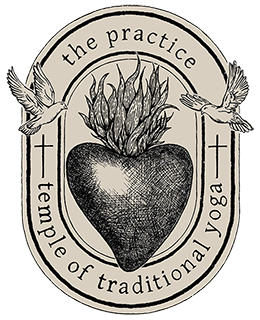by Octavio Salvado.
As published in Yoga Journal Australia Meditation Special Edition (July).
Our current paradigm of yoga is keeping us stuck.
As yoga has become popular in the West the mistaken idea that yoga and asana are one and the same has become widespread. For as long as we believe this to be true we will remain stuck practicing in ways that lack transformative power; stuck in cognitive and behavioural patterns that no longer serve us and, as a result, remain stuck in lives, jobs and relationships that do not serve our highest potential.
It’s time to move on. Asana alone is not enough to evolve our consciousness. While great for clearing blockages within our gross body and subtle energetic networks (blockages that may have been created through past choices and actions), if we genuinely want to commit to a practice that will shape our future and ultimately our destiny, the master key is not asana; it’s meditation.
Think of asana as the opening to a grander and ultimately more interesting conversation about yoga and life; that is, as an introduction to humanity’s ultimate guidebook to a life well lived. If this is the case, the question begs, why are so few yogis turning the page? Is it because we’re afraid? Or because the structure of the yoga industry is such, that our teachers lack the depth of training and personal practice to lead us boldly into the depths of our consciousness?
Tell the average Hindu in India that you’re a yoga teacher and they will assume you teach meditation. Being an asana teacher and a yoga teacher are not the same thing. The world has thousands of asana teachers but few yoga teachers. Let’s face it, as a teacher, it can take courage to portion out ten minutes of a 60 minute class to lead students in a practice of stillness. Yet, without meditation, yoga is little more than exercise.
For the most part, modern asana sequencing is not consistent in its cultivation of a calm and stable mind. To clarify, being exhausted at the end of practice and being stable and calm at the end of a practice, are not the same thing. Did you know, for example, that asana categories (of which there are six – forward folds, twists, laterals, backbends, extensions and inversions) are not designed to be merged (except under specific circumstances in advanced asana practices). Why? Because each pose category has a unique affect our pranic landscape and, through this, a unique effect on our psychology. We cannot condition one without conditioning the other. To mix pose categories without proper understanding of their pranic impact will actually keep the mind stuck in, or perhaps even amplify, existing patterns of agitation. Health benefits aside, asana’s primary purpose is actually to leverage prana so we can then use prana to leverage the mind.

Asana. Pranayama. Meditation. In that order. It has been laid out this way in texts for thousands of years. It’s time for teachers to honor the privilege of teaching the ancient science of yoga by being courageous in our willingness to move against the grain of popular practice. A grain which does not currently serve the highest potential of practitioners. Its time for asana teachers to become yoga teachers. The tradition deserves that and so do our students.
From the yogic perspective, meditation can be broken into three progressive stages. The first stage, Dharana is the development of concentration power by training the mind to move beyond a distracted state. If we are unable to focus our minds for an extended period of time we will end up spending long times sitting on the floor daydreaming without ever really approaching a meditative state. In Dharana, a specific object of meditation is chosen as a point of focus, however, at this point the object is less important than the development of concentration itself.
In the second stage, the thinking mind stops fluctuating and awareness begins to flow in a single, effortless stream. The intellect falls away and pure presence arises. Dhyana is the name given to this phase. It signifies that a line of energetic transference has opened up between mediator and object. Yoga (and now quantum science) takes the view that beneath the illusory sheath of matter everything is made up of one unified energy field. We live in a world of spinning electrons and sub-atomic particles that appear as solid, separate forms yet in truth are simply unique energy flows within this unified field. Both the science of yoga and the science of quantum physics suggest that this field can be manipulated with the mind. As such, through successful single-pointed concentration, the qualities inherent in our object of meditation will begin to impart or transfer themselves to us and that is why here, with the practice of Dhyana, the object becomes more significant.
Over time, whatever we merge our minds with we will become more like. Concentrating on negative concepts like disease (or fear of disease), for example, will manifest a like-vibration in the body, whereas meditating on the Gayatri mantra, an ancient ode to the pure essence of light (which has a much higher vibrational frequency) will cause our own vibration to raise. The choice is ours. And choose we must, because we are always choosing, if not consciously then via our subconscious patterning.
If we are diligent with our meditation practice and show up daily (regardless of whether we feel like it or not), we will arrive at a point where the qualities of our meditation object will endure within us and continue to transform us even after our meditation session has ended. Through repetition, the mind gradually becomes like that which we are meditating on and we will begin to see and experience the world through this new lens of perception.
Mantra is considered the most potent of all concentration tools. Other tools can yield the sweet nectar of meditative absorption but mantra, because of its vibratory nature, is honored as a fast track into the infinite ocean of electro-magnetic energy known to the ancients as Akasha, a hidden world of inaudible sounds and unseen lights just outside the reach of our flesh-born ears and eyes.
The full flowering of meditation takes place in the final stage of meditation, Samadhi, the highest state of perception and mental clarity resulting from the complete merging of the mind with its object of meditation until any personal sense of ‘I’ is obliterated. Once in Samadhi any comprehension of self as separate from the world disintegrates. We are no longer our name or the roles we play. We are no longer sitting in a room waiting for the sun to rise. We are simply ‘existence’; we are pulsing awareness in a sea of infinite energy.
As practice progresses, the moments we spend in this ‘time beyond time’ begin to extend and by consistently touching this place, where a limitless truth beyond the confines of our human identity exists, we start to recalibrate our future. Each day we practice, the vibrational legacy of our meditation deepens and starts to influence the choices we make. We begin to make choices from a place of embodied wisdom, knowing that beneath that which we can see with our eyes, we are all connected. We are united within the one-song of the uni-verse.
Meditation is the master key to forging a new destiny. There is no way more effective to re-groove the mind, to learn how to show up in the world or how to see it in a brand new way. Think of meditation as being the deep root from which the tree of your practice grows and at the same time, the sweetest fruit born of that healthy tree.
Start where you are. Plant the seeds of self-effort today and let the rest of your practice, over time, lead you higher into the clear blue sky of meditative silence because there, beyond the limits of the mind, in that place of pure connection, you will come to understand your sacred reasons for coming here.
